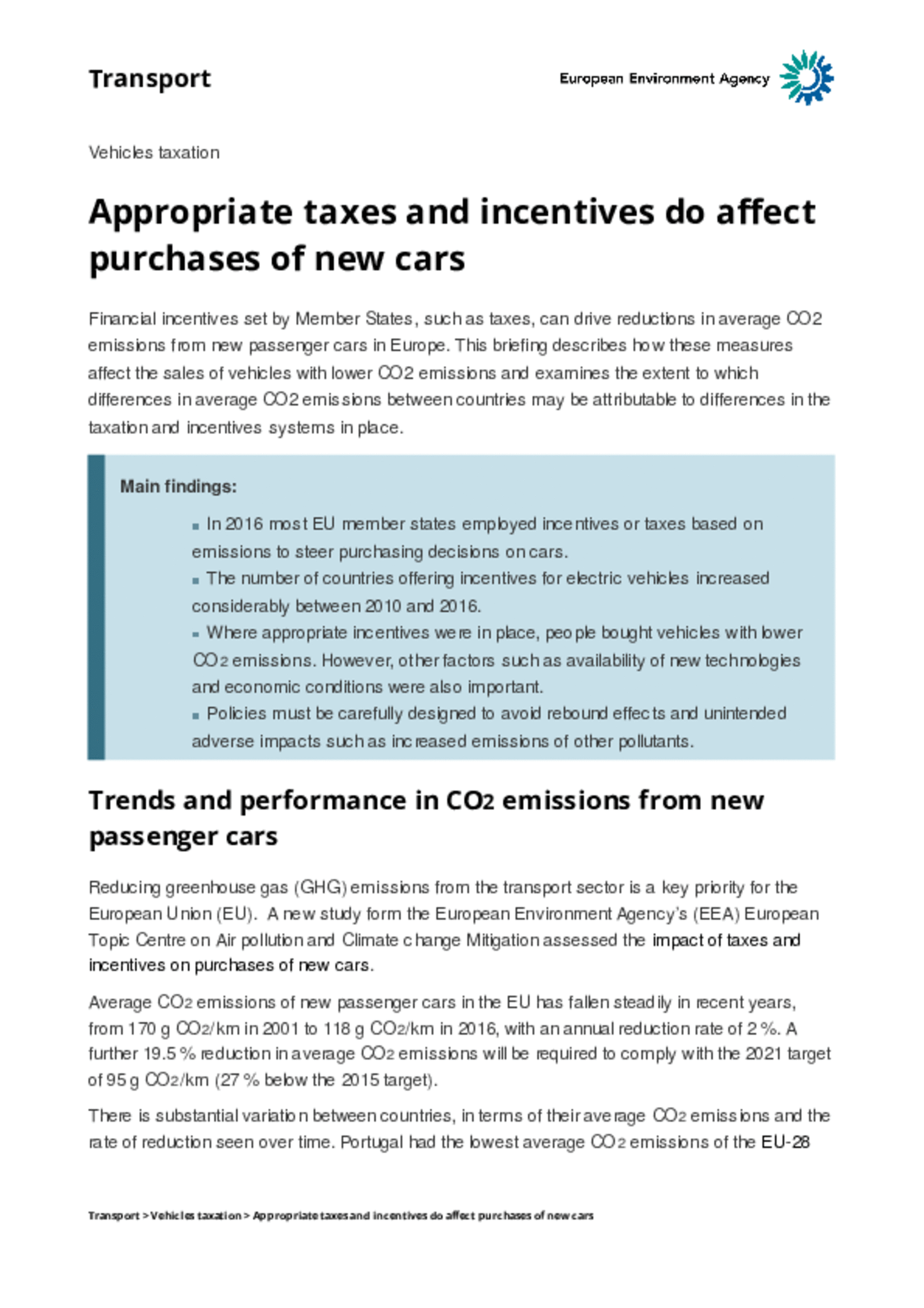All official European Union website addresses are in the europa.eu domain.
See all EU institutions and bodiesBriefing 2/2018
Financial incentives set by Member States, such as taxes, can drive reductions in average CO2 emissions from new passenger cars in Europe. This briefing describes how these measures affect the sales of vehicles with lower CO2 emissions and examines the extent to which differences in average CO2 emissions between countries may be attributable to differences in the taxation and incentives systems in place.
ISBN: 978-92-9213-944-5

